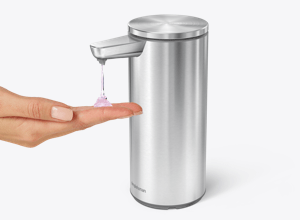a simple guide to recycling
A few tips to help ensure your items actually get recycled instead of causing contaminations and getting thrown into a landfill.
simplehuman














wishcycling is not helpful
You may mean well, but putting the wrong stuff in recycling bins just makes things worse by contaminating good recyclables or gumming up facilities.
most important tip: if you’re not sure, don’t guess. Throw it in the trash.

no plastic bags!
Single-use plastic bags are a terrible waste. They are not recycled by typical facilities (if at all). When they get mixed in with curbside pick-ups, they often get tangled up in plant machinery causing frequent shutdowns.
Reuse them, or throw them in the trash and treat yourself to a nice reusable tote!


no poking or tearing
If a plastic is soft enough to poke through it, or if it can be torn open like a bag of potato chips, it is unlikely to be recyclable and belongs in the trash.

news flash: In the United States, food waste contaminates 25% of our recycling loads, which sends tons of recyclables to landfills.
rinse it out
If it is dirty enough to attract pests, it’s most likely too contaminated to be recycled.

combos are a no-no
Recycling is only possible when it can be separated into single materials. Items like plastic-coated coffee cups, laminated paper and paper-bubble wrap envelopes go into the trash.

no bag needed (sometimes)
In most areas you can dump loose recyclables directly into special blue bins for recycling — and that’s for the best. A bag will only contaminate the recyclables or make sorting harder. However, in some places, like New York City, you’re required to put recyclables in clear or blue bags to be picked up at the curb.
news flash: In some facilities, workers are not allowed to open bags, so even if a bag is full of easily recycled water bottles, it may all get thrown into a landfill.


not too small
Don’t recycle anything smaller than a playing card. Small objects can jam machines and shut them down 10 to 15 times a day.

check the numbers
Most of the general facilities in the United States can only handle plastics labeled as 1 or 2. Check your local regulations for what’s accepted in curbside pick-ups. There may also be a special drop-off facility for higher numbers in your area. If not, plastics labeled 3 through 7 should go in the trash.











